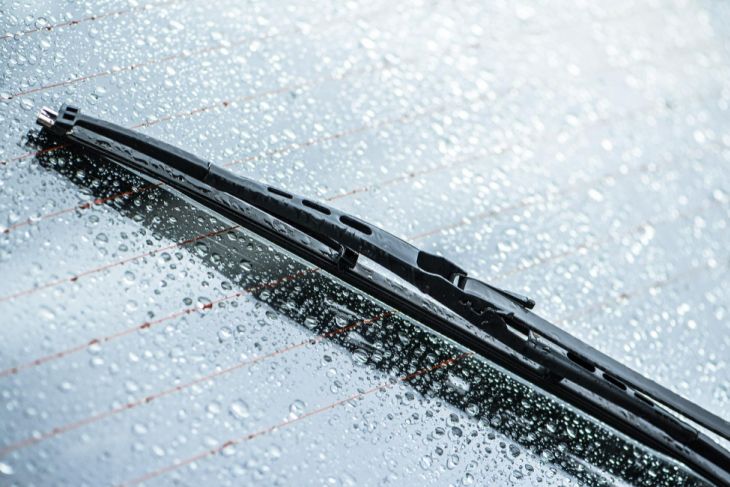
Windshield wipers are one of those vehicle components that are easy to overlook—until they fail. Whether you’re caught in a sudden downpour or battling road grime during your daily commute, your wiper blades are essential for maintaining clear visibility and safe driving conditions. So, how often should you replace your wiper blades, and what are the telltale signs that it’s time for a new set? Let’s break it down.
How Often Should You Replace Wiper Blades?
Most automotive experts recommend replacing wiper blades every 6 to 12 months. However, the actual lifespan of your wiper blades can vary based on several factors:
- Climate: Hot, sunny weather can dry out the rubber, while freezing temperatures can cause it to crack or tear.
- Usage: Frequent use, especially in rainy or snowy conditions, can wear down the blades faster.
- Storage: Cars parked outside and exposed to the elements may require more frequent blade replacements compared to garage-kept vehicles.
A good rule of thumb is to inspect your wipers every few months and replace them at least once a year, preferably before the rainy or snowy seasons begin.
Signs You’re Overdue for a Wiper Blade Replacement
Even if you’re not keeping track of the calendar, your car will often give you signs that it’s time to change the blades. Watch out for the following:
1. Streaking or Smearing
If your wipers leave streaks or smears on the windshield, they’re not making proper contact with the glass. This could be due to worn-out or hardened rubber, which can reduce visibility, especially at night.
2. Chattering or Skipping
When the blade bounces or “chatters” across the windshield instead of gliding smoothly, it’s usually a sign that the rubber has become deformed or hardened.
3. Squeaking Sounds
While some noise is normal in dry conditions, persistent squeaking, even when the windshield is wet suggests the rubber is deteriorating.
4. Split or Cracked Rubber
Physically inspect your blades. If you see splits, cracks, or any missing pieces of rubber, it’s time to replace them.
5. Poor Performance in Rain or Snow
If your visibility is compromised during wet or snowy conditions despite using the wipers, they’ve lost their effectiveness.
6. Uneven Cleaning Pattern
If parts of your windshield remain dirty or wet after a single wipe, the blade may not be applying even pressure due to wear or a damaged frame.
Tips for Prolonging Wiper Blade Life
Want to get the most out of your blades? Here are a few maintenance tips:
- Clean your windshield regularly to remove debris and reduce friction.
- Wipe the blades with a damp cloth every couple of weeks to remove dirt and grime.
- Lift your wipers off the windshield during snowstorms or when parked in the sun to reduce rubber damage.
- Use washer fluid, not dry wipers, to avoid scraping your windshield.
Final Thoughts
Wiper blades may be small, but they play a big role in your safety on the road. Replacing them regularly and watching for signs of wear can save you from dangerous visibility issues—and it only takes a few minutes and a modest investment. If in doubt, err on the side of caution: when you see streaks, hear squeaks, or feel your visibility is compromised, it’s time for a fresh set of blades. Contact Quick Lane Mississauga for more information on Replacing Wiper Blades.
Frequently Asked Questions
You may need to replace your wiper blades if you notice streaking, skipping, or squeaking during operation. Other signs include visible cracks, splits, or worn rubber, as well as reduced visibility during rain or snow. If the blades are not making full contact with the windshield or leave patches of water behind, it's time for a replacement.
Yes, worn or damaged wiper blades can potentially scratch or damage your windshield. If the rubber on the blade has deteriorated or come off, the metal or hard plastic parts may come into direct contact with the glass, leading to scratches that can impair visibility and require costly repairs.
Conventional wiper blades have a metal frame with multiple pressure points to press the rubber blade against the windshield. Beam-style wiper blades, on the other hand, use a one-piece, curved design with even pressure distribution for improved contact and performance, especially in harsh weather. Beam blades are generally more durable and effective in clearing water, snow, and ice.
Yes, you can replace wiper blades yourself—most vehicles have a simple clip or hook system that allows for easy installation. However, if you're unsure about the correct size or type, or if you want to ensure a perfect fit and function, a professional can help install them quickly and correctly.
Yes, it's recommended to replace wiper blades in pairs. Both blades typically wear out at the same rate, and installing a new blade alongside an old one can lead to uneven cleaning and reduced visibility. Replacing both ensures balanced performance and consistent windshield contact.
New wiper blades may squeak or streak due to several reasons: dirty or oily windshields, incorrect installation, poor-quality blades, or using the wrong size for your vehicle. Environmental factors like tree sap, road grime, or windshield coatings can also affect performance. Cleaning both the windshield and the blades often resolves the issue. If the problem persists, a professional inspection may be needed.
Get fast and reliable wiper blade replacement at 3285 Mavis Rd, Mississauga, ON L5B 3X4.
